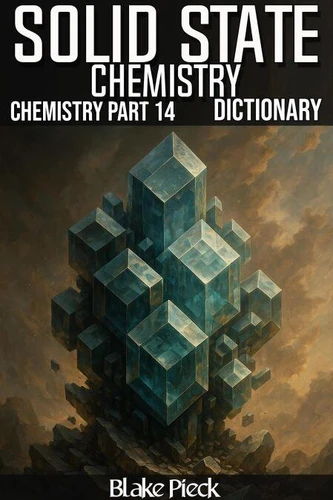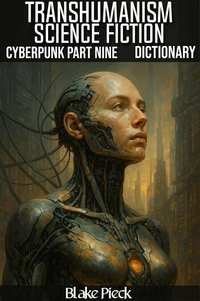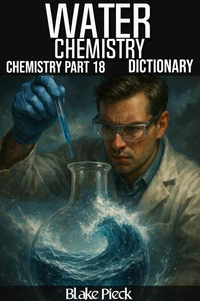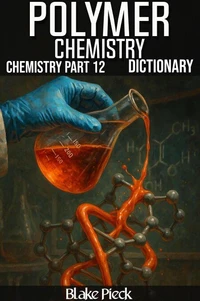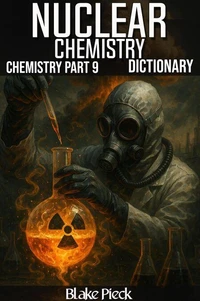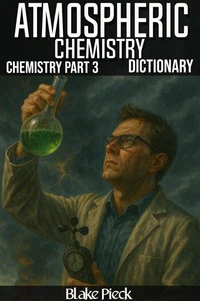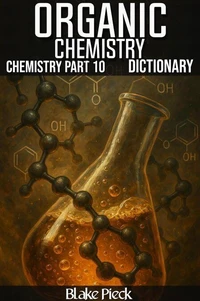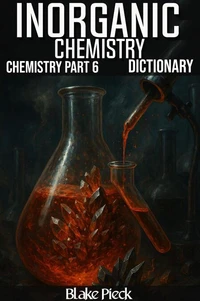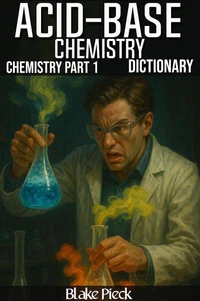Solid State Chemistry - Chemistry Part 14 Dictionary. Grow Your Vocabulary
Par :Formats :
Disponible dans votre compte client Decitre ou Furet du Nord dès validation de votre commande. Le format ePub est :
- Compatible avec une lecture sur My Vivlio (smartphone, tablette, ordinateur)
- Compatible avec une lecture sur liseuses Vivlio
- Pour les liseuses autres que Vivlio, vous devez utiliser le logiciel Adobe Digital Edition. Non compatible avec la lecture sur les liseuses Kindle, Remarkable et Sony
 , qui est-ce ?
, qui est-ce ?Notre partenaire de plateforme de lecture numérique où vous retrouverez l'ensemble de vos ebooks gratuitement
Pour en savoir plus sur nos ebooks, consultez notre aide en ligne ici
- FormatePub
- ISBN8231199556
- EAN9798231199556
- Date de parution01/09/2025
- Protection num.pas de protection
- Infos supplémentairesepub
- ÉditeurWalzone Press
Résumé
Solid state chemistry examines the structure and behavior of materials in their solid form. It studies how atoms arrange themselves in crystals, how defects influence properties, and how bonding patterns determine conductivity, magnetism, and stability. From semiconductors that power electronics to ceramics that withstand extreme heat, this branch of chemistry explains the foundation of modern materials.
Within the larger discipline of chemistry, solid state study links atomic theory with technological application. It shows how X-ray diffraction, spectroscopy, and computational modeling reveal the arrangement of matter at the microscopic level. These insights connect directly with materials science, physics, and engineering, highlighting how chemistry contributes to both fundamental knowledge and industrial progress.
This dictionary organizes the specialized vocabulary of solid state chemistry into structured and accessible entries. It includes definitions of crystal lattices, band theory, defects, phase transitions, and synthesis techniques. Each entry provides depth and clarity, supporting students in study, guiding teachers in instruction, and giving researchers and professionals a reliable reference for work across multiple disciplines.
Learning through a dictionary format strengthens command of technical terminology and builds confidence in applying it. By moving step by step through definitions, readers develop a clearer understanding of how structure relates to property. With solid state chemistry at the core of electronics, renewable energy, and advanced materials, mastery of its language provides lasting benefits for both education and professional growth.
Within the larger discipline of chemistry, solid state study links atomic theory with technological application. It shows how X-ray diffraction, spectroscopy, and computational modeling reveal the arrangement of matter at the microscopic level. These insights connect directly with materials science, physics, and engineering, highlighting how chemistry contributes to both fundamental knowledge and industrial progress.
This dictionary organizes the specialized vocabulary of solid state chemistry into structured and accessible entries. It includes definitions of crystal lattices, band theory, defects, phase transitions, and synthesis techniques. Each entry provides depth and clarity, supporting students in study, guiding teachers in instruction, and giving researchers and professionals a reliable reference for work across multiple disciplines.
Learning through a dictionary format strengthens command of technical terminology and builds confidence in applying it. By moving step by step through definitions, readers develop a clearer understanding of how structure relates to property. With solid state chemistry at the core of electronics, renewable energy, and advanced materials, mastery of its language provides lasting benefits for both education and professional growth.
Solid state chemistry examines the structure and behavior of materials in their solid form. It studies how atoms arrange themselves in crystals, how defects influence properties, and how bonding patterns determine conductivity, magnetism, and stability. From semiconductors that power electronics to ceramics that withstand extreme heat, this branch of chemistry explains the foundation of modern materials.
Within the larger discipline of chemistry, solid state study links atomic theory with technological application. It shows how X-ray diffraction, spectroscopy, and computational modeling reveal the arrangement of matter at the microscopic level. These insights connect directly with materials science, physics, and engineering, highlighting how chemistry contributes to both fundamental knowledge and industrial progress.
This dictionary organizes the specialized vocabulary of solid state chemistry into structured and accessible entries. It includes definitions of crystal lattices, band theory, defects, phase transitions, and synthesis techniques. Each entry provides depth and clarity, supporting students in study, guiding teachers in instruction, and giving researchers and professionals a reliable reference for work across multiple disciplines.
Learning through a dictionary format strengthens command of technical terminology and builds confidence in applying it. By moving step by step through definitions, readers develop a clearer understanding of how structure relates to property. With solid state chemistry at the core of electronics, renewable energy, and advanced materials, mastery of its language provides lasting benefits for both education and professional growth.
Within the larger discipline of chemistry, solid state study links atomic theory with technological application. It shows how X-ray diffraction, spectroscopy, and computational modeling reveal the arrangement of matter at the microscopic level. These insights connect directly with materials science, physics, and engineering, highlighting how chemistry contributes to both fundamental knowledge and industrial progress.
This dictionary organizes the specialized vocabulary of solid state chemistry into structured and accessible entries. It includes definitions of crystal lattices, band theory, defects, phase transitions, and synthesis techniques. Each entry provides depth and clarity, supporting students in study, guiding teachers in instruction, and giving researchers and professionals a reliable reference for work across multiple disciplines.
Learning through a dictionary format strengthens command of technical terminology and builds confidence in applying it. By moving step by step through definitions, readers develop a clearer understanding of how structure relates to property. With solid state chemistry at the core of electronics, renewable energy, and advanced materials, mastery of its language provides lasting benefits for both education and professional growth.

